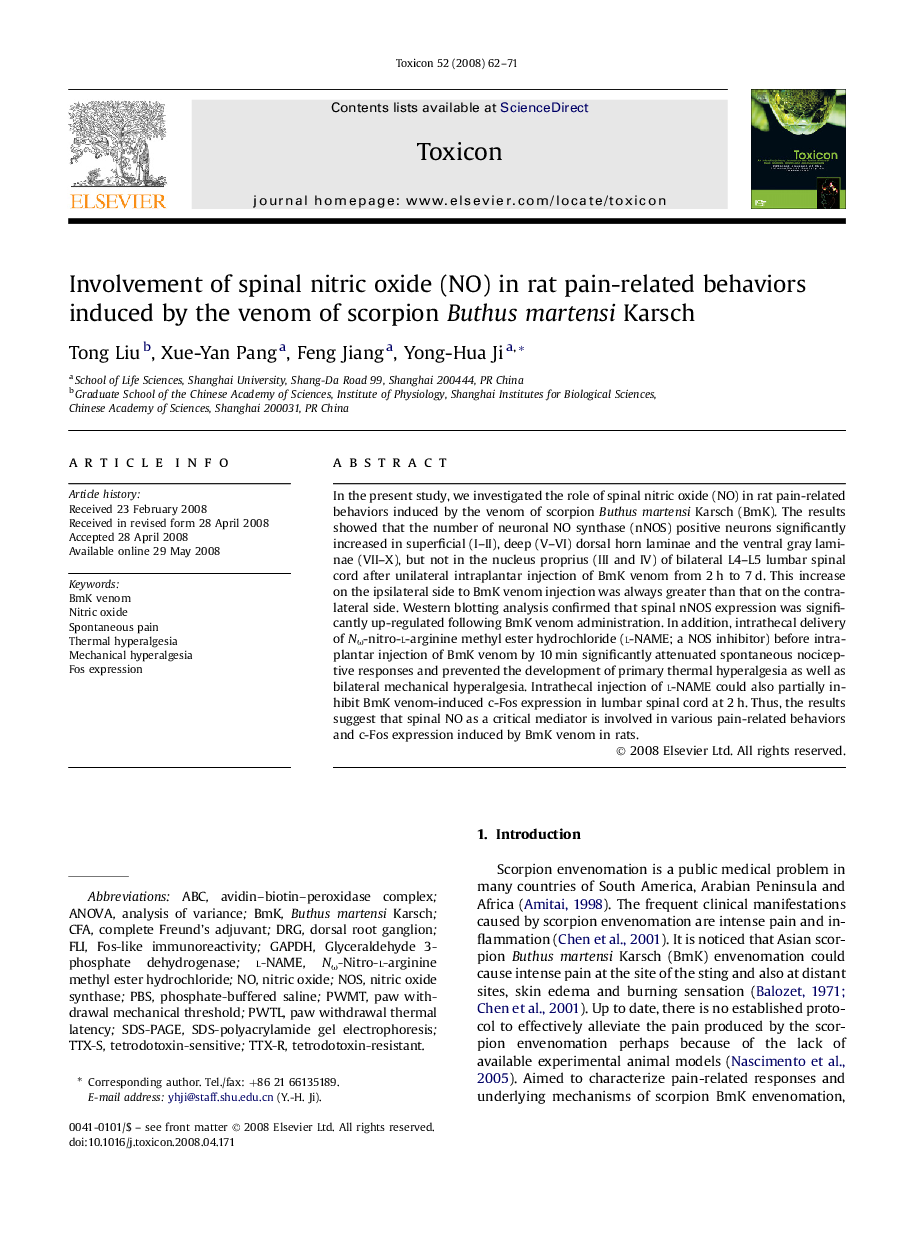| Article ID | Journal | Published Year | Pages | File Type |
|---|---|---|---|---|
| 2066591 | Toxicon | 2008 | 10 Pages |
In the present study, we investigated the role of spinal nitric oxide (NO) in rat pain-related behaviors induced by the venom of scorpion Buthus martensi Karsch (BmK). The results showed that the number of neuronal NO synthase (nNOS) positive neurons significantly increased in superficial (I–II), deep (V–VI) dorsal horn laminae and the ventral gray laminae (VII–X), but not in the nucleus proprius (III and IV) of bilateral L4–L5 lumbar spinal cord after unilateral intraplantar injection of BmK venom from 2 h to 7 d. This increase on the ipsilateral side to BmK venom injection was always greater than that on the contralateral side. Western blotting analysis confirmed that spinal nNOS expression was significantly up-regulated following BmK venom administration. In addition, intrathecal delivery of Nω-nitro-l-arginine methyl ester hydrochloride (l-NAME; a NOS inhibitor) before intraplantar injection of BmK venom by 10 min significantly attenuated spontaneous nociceptive responses and prevented the development of primary thermal hyperalgesia as well as bilateral mechanical hyperalgesia. Intrathecal injection of l-NAME could also partially inhibit BmK venom-induced c-Fos expression in lumbar spinal cord at 2 h. Thus, the results suggest that spinal NO as a critical mediator is involved in various pain-related behaviors and c-Fos expression induced by BmK venom in rats.
